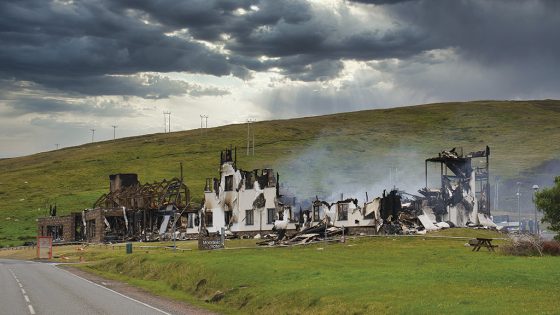Two newly published reports have called for more research into the fire-safety performance of volumetric modular construction.
In a report commissioned by the government, researchers at Harlow Consulting and Edinburgh Napier University warn that there is no standard fire-test method that is directly applicable for volumetric construction.
It says that the testing that does take place is therefore likely to be suboptimal.
Volumetric modular construction (VMC), also known as category 1 modular, is a type of modern method of construction (MMC) where three-dimensional units are manufactured off site, then transported to and assembled on site.
The method is increasingly being used by Whitehall departments, including the Ministry of Defence, as a means of speeding up the delivery of projects, as well as cutting waste and costs.
Two years ago, the National Fire Chiefs Council called for the introduction of specific safety regulations and legislation relating to MMC, and for it to be specifically addressed under the Building Safety Act.
The government did not do either of those things, although it subsequently announced a new standard for homes built using MMC.
The Harlow Consulting and Edinburgh Napier report, published last week, says: “While there is insufficient evidence to suggest whether a fire is more or less likely in a modular building compared with a traditionally constructed building, the event of a serious fire is likely to result in more serious consequences in a modular building if the choice has been made to use combustible elements in the voids and cavities through which fire and smoke can travel quickly – unless these risks are mitigated via appropriate design, manufacture and installation.
“Further research is critical to have a clearer understanding of how materials (and combinations of materials/components) behave in modular buildings in the event of a fire, to feed into [the] development of a standard fire testing methodology for volumetric construction.”
Meanwhile, the Health and Safety Executive/Building Safety Regulator (HSE/BSR) published a research paper this week, based largely on reviews of other literature and from media reports, highlighting a number of potential fire-risk issues relating to the method.
These include missing or incorrectly installed cavity barriers, defects found in fire doors, penetrations through compartment walls that are not correctly firestopped, and hidden voids.
However, it notes: “Some of these issues could also relate to other (non-VMC) builds and there is no evidence to suggest whether the frequency of the issues would be higher or the consequences of the issues more severe in relation to VMC compared to other types of construction.”
Incidents it cites include a fire that destroyed the The Moorfield Hotel in Shetland (pictured) in 2020, which was a modular building made of timber.
It says that potential future steps could include fire and structural testing of modules in a way that better represents the typical contexts of these modules than existing tests do, ie, stacked or part of a hybrid structure.
“This would help identify the consequences of any building safety issues in comparison to traditional (non-VMC) builds,” it adds.
“Testing should include timber VMC to determine the nature of potential risks of VMC overlapping with the potential building safety risks of timber structures. Such tests might have implications for existing buildings and may inform any urgent concerns about PVMC [prefabricated volumetric modular construction].”
Last year, Construction News published an in-depth report on whether measures announced by the government up to that point would be enough to make MMC buildings safer.
The Harlow Consulting and Edinburgh Napier report examines other issues relating to MMC, including procurement and project management. It was finalised in July 2022 but only published by the government last week.
The HSE/BSR report, based on research carried out up until October 2023, was also published last week.

